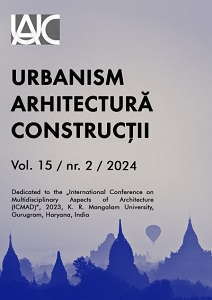Informal Interaction Spaces and Student-centred Learning in Architectural Schools
Informal Interaction Spaces and Student-centred Learning in Architectural Schools
Author(s): Debashreeta Debabarni, Deepashree ChoudhurySubject(s): Architecture, Higher Education , Educational Psychology
Published by: INCD URBAN-INCERC
Keywords: architectural design; relational spaces; educational environments;
Summary/Abstract: In architectural education, informal interaction spaces play a significant role in experiential learning, allowing adult learners more flexibility and freedom. In India, the significance of these spaces has been heightened by the National Education Policy (NEP 2020) formulated by the Ministry of Human Resources, Government of India, which aligns with the activities promoted in educational institutes' informal interaction spaces. This research paper explores the role of informal interaction spaces in enhancing student-centered learning in architecture schools, presenting best practices for their design and utilization. The study employs mixed research methods, including literature review, case studies, and interviews, to gather perspectives from learners and instructors. The case study reveals a strong positive correlation between the percentage of informal interaction space and the learning outcomes of students. In addition to identifying challenges in informal interaction spaces, including interference and design issues, the literature study and respondents' views associate the crosscultural discussions happening in these spaces with academic learning, life skill enhancement, and the development of collaboration skills, establishing their significance in facilitating effective and student-centered pedagogy. Varied preferences of respondents regarding design criteria to be adopted in designing informal interaction spaces emphasize the need for adaptable designs that cater to diverse student needs regarding placement, visual connection, and amenities. The conclusions underscore the multifaceted impact of these spaces, providing valuable insights for their refinement and contributing to ongoing discourse in architectural education.
Journal: Urbanism. Arhitectură. Construcţii
- Issue Year: 15/2024
- Issue No: 2
- Page Range: 193-214
- Page Count: 22
- Language: English

